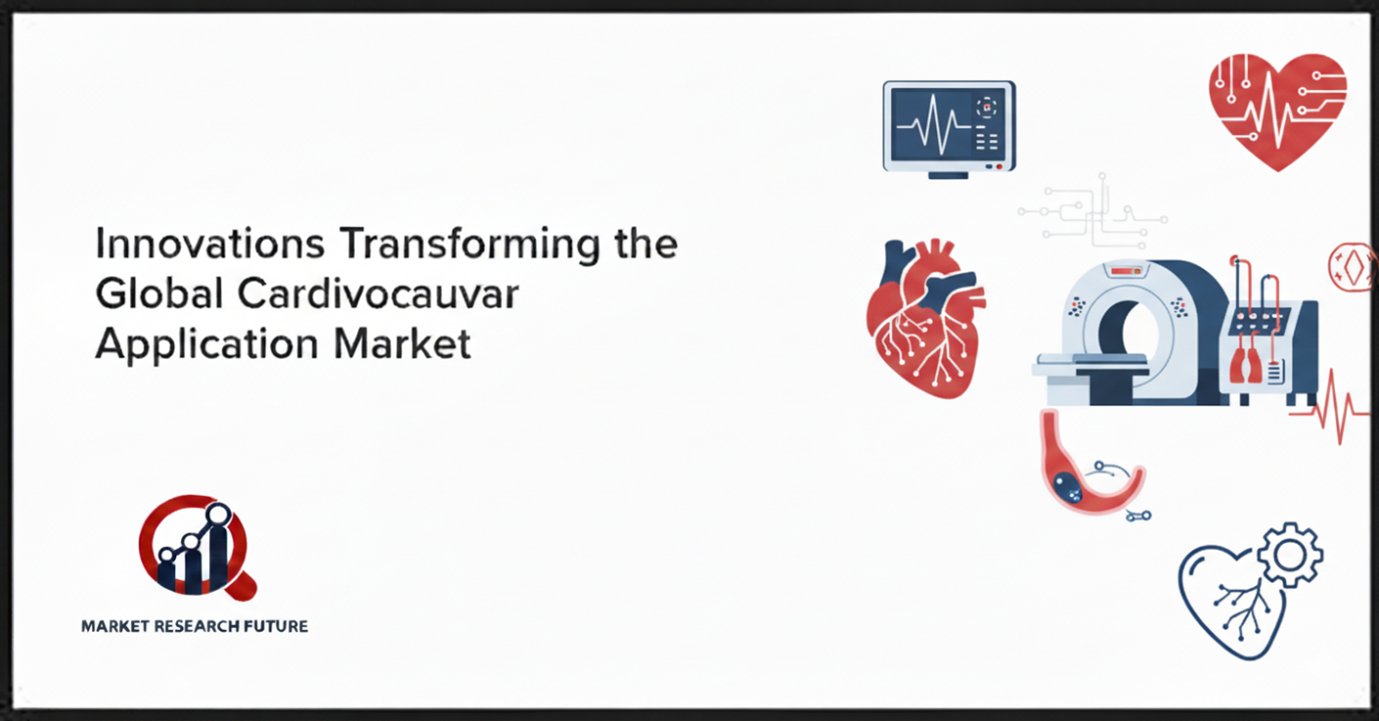Innovations Transforming the Global Cardiovascular Application Market

During the last decade, there has been a drastic increase in the patient population suffering from cardiovascular diseases owing to the adoption of sedentary lifestyles, rising diabetic and obese populations, and the growing geriatric demographic. Consequently, a majority of manufacturers are racing to introduce advanced cardiovascular devices for the treatment and management of these conditions.
Rising Disease Burden Driving Market Growth
The introduction of innovative cardiovascular devices has completely transformed diagnostic and treatment practices, offering several advantages such as improved accuracy, convenience, and accessibility. The rising geriatric population continues to play a pivotal role in market expansion, as older adults are more prone to cardiovascular disorders. Additionally, the demand for portable and user-friendly devices has increased significantly, further fueling market growth.
AI and Wearable Technology Revolutionizing Cardiac Care
Rapid advancements in wearable technology, artificial intelligence (AI), and minimally invasive treatments are reshaping the cardiovascular sector by enabling earlier detection, improved monitoring, and more personalized therapies. AI-powered imaging and interpretation systems now automate complex tasks such as coronary calcium scoring and ventricular function assessment, streamlining workflows and enhancing diagnostic accuracy across institutions.
Consumer and clinical-grade wearables have evolved beyond basic heart-rate monitoring. With recent FDA approvals, multimodal devices capable of recording ECG, PPG, and seism cardiography data now allow continuous clinic-grade cardiac monitoring outside hospital settings.
Next-Generation Therapeutics and Diagnostic Tools
These advanced sensors, combined with cloud analytics, enable clinicians to identify arrhythmia and cardiac decompensation earlier, improving long-term disease management. The market is also witnessing strong demand for catheter-based valves and related technologies, as transcatheter therapies such as TAVR (Transcatheter Aortic Valve Replacement) expand into lower-risk groups and demonstrate improved outcomes.
New diagnostic solutions, such as AI-enhanced stethoscopes that integrate auscultation and ECG capabilities, are showing great promise for rapid and accurate detection of valve diseases and heart failure at the primary care level.
Regulatory and Economic Factors Influencing Adoption
Despite these remarkable technological strides, economic and regulatory considerations remain crucial. Reimbursement frameworks for telehealth and remote cardiac monitoring continue to evolve but still lag behind clinical advancements, which may hinder broader adoption in some healthcare systems.
The Future of Cardiovascular Care
Collectively, these innovations are transforming cardiovascular care by promoting early diagnosis, minimally invasive treatment, and continuous outpatient management. This shift is creating lucrative opportunities across devices, software, and digital health services — particularly for companies that can demonstrate clinical efficacy, regulatory compliance, and tangible health-economic value.